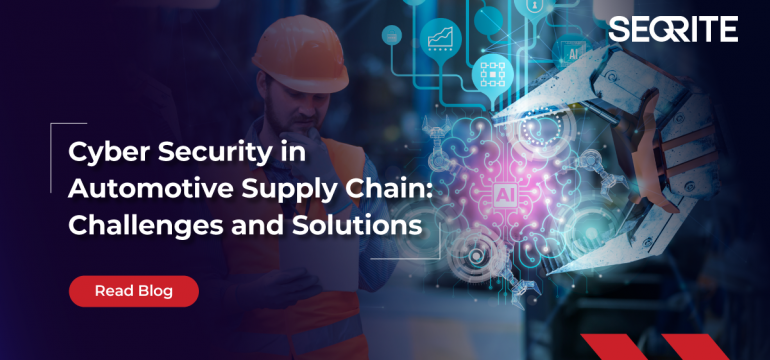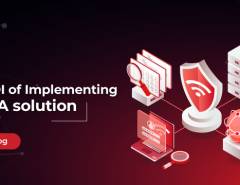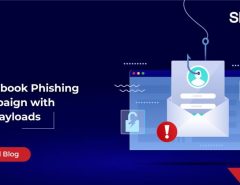The first India Cyber Threat Report 2023 revealed the automotive supply chain as the most cyberattacked sector. Over the past three to four years, the global adoption of Industry 4.0 has marked a transformative trend, witnessing extensive digitalization integration across industries. The industry, once considered relatively secure, now faces escalating cyber threats. In 2023, a notable surge in cyber-attacks targeted the automotive sector, marking a shift from its earlier perceived safety. Supply chains within the automotive industry experienced the highest number of detections, surpassing government agencies and the education sector, also revealed in the Threat report. These cyberattacks pose a significant financial, operational, and reputational risk to OEMs, suppliers, and consumers alike, making automotive supply chain cybersecurity a priority.
Key Challenges in Securing Automotive Supply Chain
Complexity and Interconnectedness: A Breeding Ground for Vulnerabilities
The modern automotive supply chain is a complex ecosystem comprising multiple stakeholders, interconnected systems, and a diverse range of components and software. This complexity creates numerous entry points for cyber attackers, making it challenging to ensure end-to-end security. Moreover, the lack of industry-common requirements and varying nomenclature across companies further exacerbates the cybersecurity challenges in the automotive supply chain.
Legacy Systems and Software: Bridging the Gap
Many automotive systems and components are built on legacy technologies that were not designed with cybersecurity in mind. Retrofitting security measures onto these systems presents a significant challenge for automotive cybersecurity teams. Additionally, the use of open-source software and the involvement of multiple suppliers in the development process further complicate the task of securing the automotive supply chain.
Lack of Standardization: Navigating the Patchwork of Requirements
The absence of industry-wide standards for automotive supply chain cybersecurity poses a significant hurdle for OEMs and suppliers. Each player in the supply chain may have their own patch specifications and compliance standards, leading to integration risks and potential vulnerabilities. The lack of standardization also hampers the development of effective countermeasures and complicates the process of ensuring consistent cybersecurity practices throughout the supply chain.
Best Practices For Automotive Supply Chain Cybersecurity
Implementing a Multi-Layered Security Approach
To effectively mitigate cyber risks in the automotive supply chain, a multi-layered security approach is crucial. This approach involves deploying a combination of defensive mechanisms at various levels, creating a robust barrier against cyber threats. Perimeter defenses, such as firewalls and intrusion detection systems, help prevent unauthorized access at the entry point. Network segmentation and micro-segmentation limit the spread of breaches within the supply chain. Robust authentication protocols and endpoint protection tools further strengthen the security posture. Regular code analysis, encryption, and continuous monitoring ensure system integrity and detect suspicious activities in real time.
Building a Culture of Cybersecurity
Cybersecurity is not just a technological challenge; it is a cultural mindset that should permeate every level of the organization. Establishing a culture of cybersecurity involves fostering awareness and accountability among employees, suppliers, and partners. Regular training programs, awareness campaigns, and clear security policies help educate stakeholders about the risks and best practices. Encouraging proactive reporting of potential vulnerabilities and implementing incident response plans further enhance the organization’s cybersecurity resilience.
Collaboration and Information Sharing
In the face of evolving cyber threats, collaboration is key to strengthening the automotive supply chain’s cybersecurity defenses. Industry-wide initiatives, such as the Automotive Information Sharing and Analysis Center (Auto-ISAC), facilitate the exchange of timely information about emerging threats, vulnerabilities, and incidents. By sharing insights and best practices, OEMs, suppliers, and cybersecurity experts can collectively enhance their ability to detect, prevent, and respond to cyberattacks. Collaboration also extends to third-party audits and certifications, ensuring that suppliers adhere to robust cybersecurity standards.
Compliance and Regulatory Frameworks
Several compliance and regulatory frameworks have been developed to address the growing cybersecurity risks in the automotive industry. Key frameworks include ISO/SAE 21434 for cybersecurity engineering, UN Regulation No. 155 for cybersecurity management systems, AUTOSAR for secure software development, and ISO 26262 for functional safety. Adhering to these frameworks helps build a strong cybersecurity foundation and demonstrates a commitment to protecting the automotive supply chain.
Embracing Emerging Technologies
As the automotive industry keeps growing, embracing emerging technologies can enhance the cybersecurity posture of the supply chain. Machine learning and AI-powered solutions can strengthen threat detection and response capabilities, enabling proactive defense against cyber threats. These technologies analyze vast amounts of data from vehicle systems and manufacturing processes, identifying patterns indicative of potential attacks. By leveraging real-time threat intelligence such as XDR, automotive cybersecurity teams can automate incident response, isolate affected systems, and deploy countermeasures promptly. Embracing these technologies is crucial to staying one step ahead of cybercriminals.
Final Thoughts
The automotive supply chain cybersecurity is a multifaceted challenge that requires a proactive and comprehensive approach. Everyone who is part of the automobile industry ecosystem, including manufacturers, sellers, consumers, suppliers, repairers, and all others, plays a pivotal role in improving cybersecurity. Learn more about how to defend your network from critical incidents.




